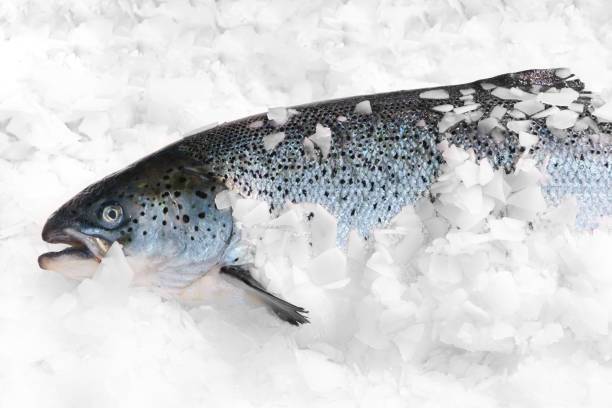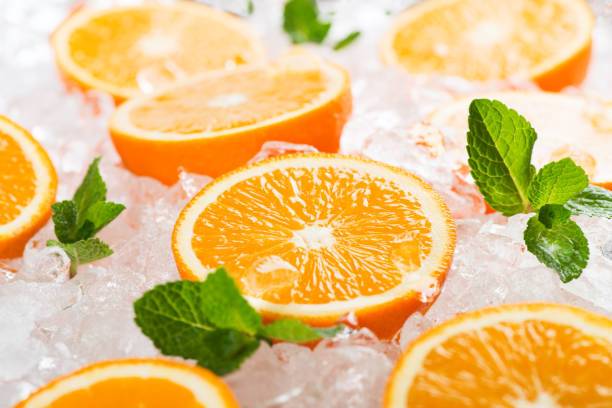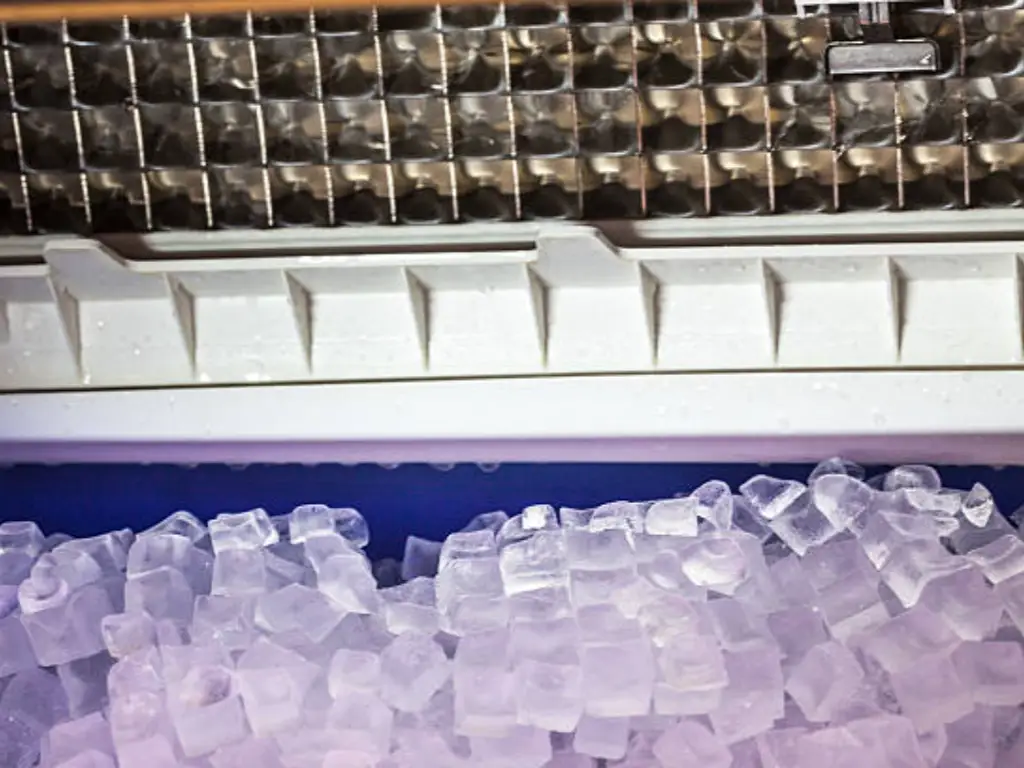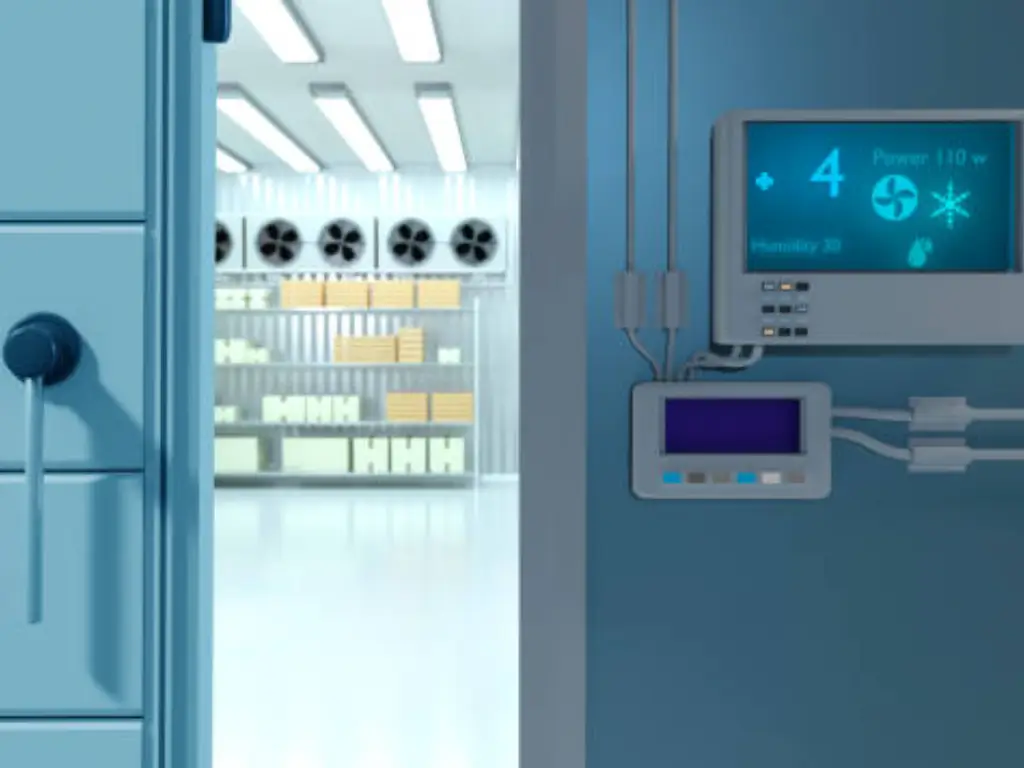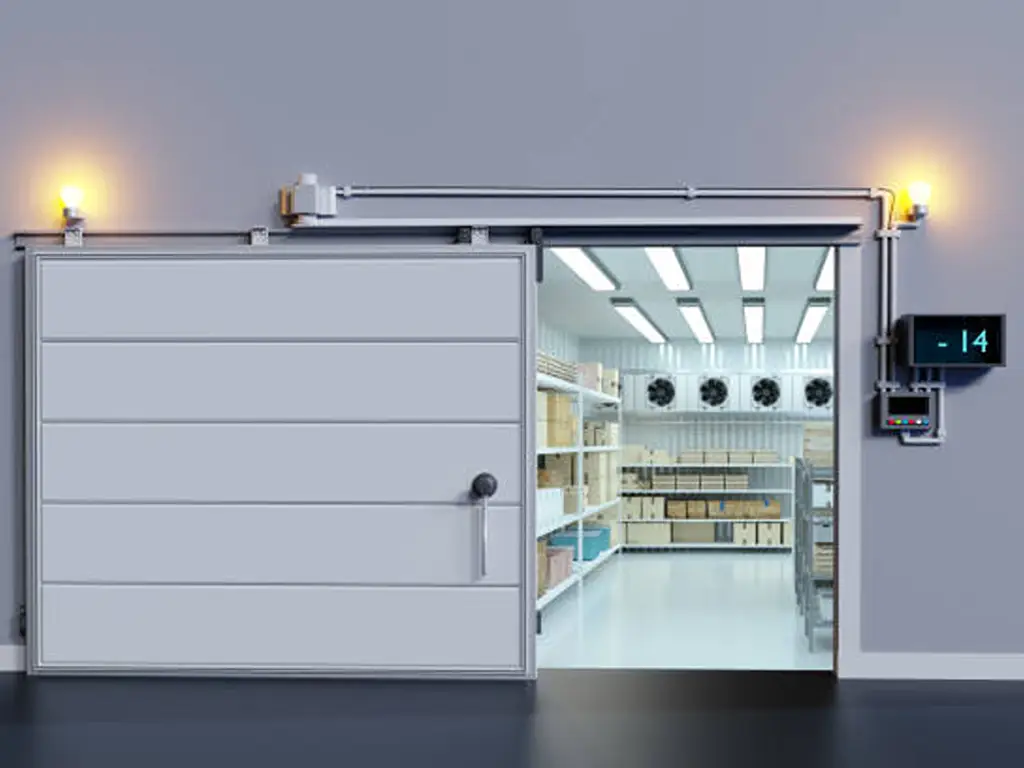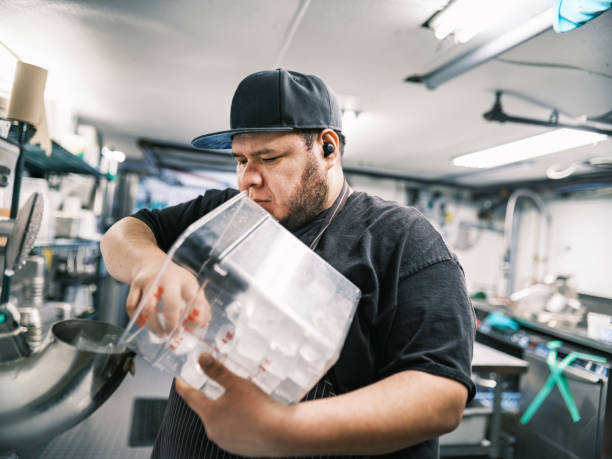상업용 제빙기란 무엇이며 이것이 귀하의 비즈니스에 중요한 이유
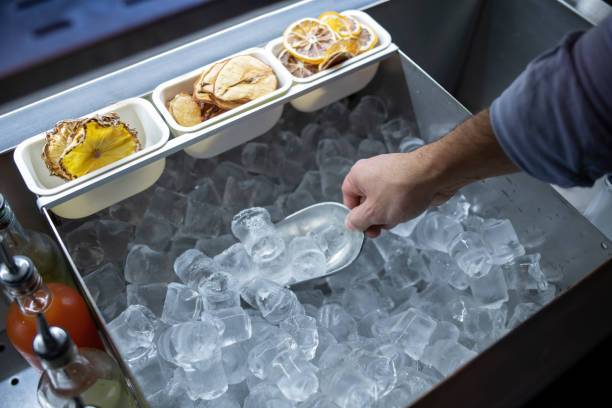
상업용 제빙기는 대량의 얼음을 일관되고 효율적으로 생산하도록 설계된 정밀 엔지니어링 기계입니다.. 국내 제빙기와는 다르게, 그들은 고강도 작업을 위해 제작되었습니다, 통합 위생 기준, 특정 산업의 요구 사항을 충족하도록 맞춤화되는 경우가 많습니다..
이 기계는 온도 제어가 필요한 작업을 지원하는 데 중요한 역할을 합니다., 제품 무결성, 또는 고객 서비스는 얼음 가용성에 크게 의존합니다.. 레스토랑과 바에서, 얼음의 품질과 양은 음료 제공과 고객 만족도에 영향을 미칩니다. 병원과 실험실에서, 얼음은 온도에 민감한 공정과 안전한 환자 관리를 지원합니다.. 어업이나 육류 포장에, 얼음은 미생물 성장을 늦춘다, 제품 유통기한 연장.
따라서, 상업용 제빙기가 어떻게 작동하는지 이해하는 것은 올바른 모델을 선택하고 운영 연속성을 유지하는 데 필수적입니다..
단계별 제빙과정과 각 구성요소의 역할
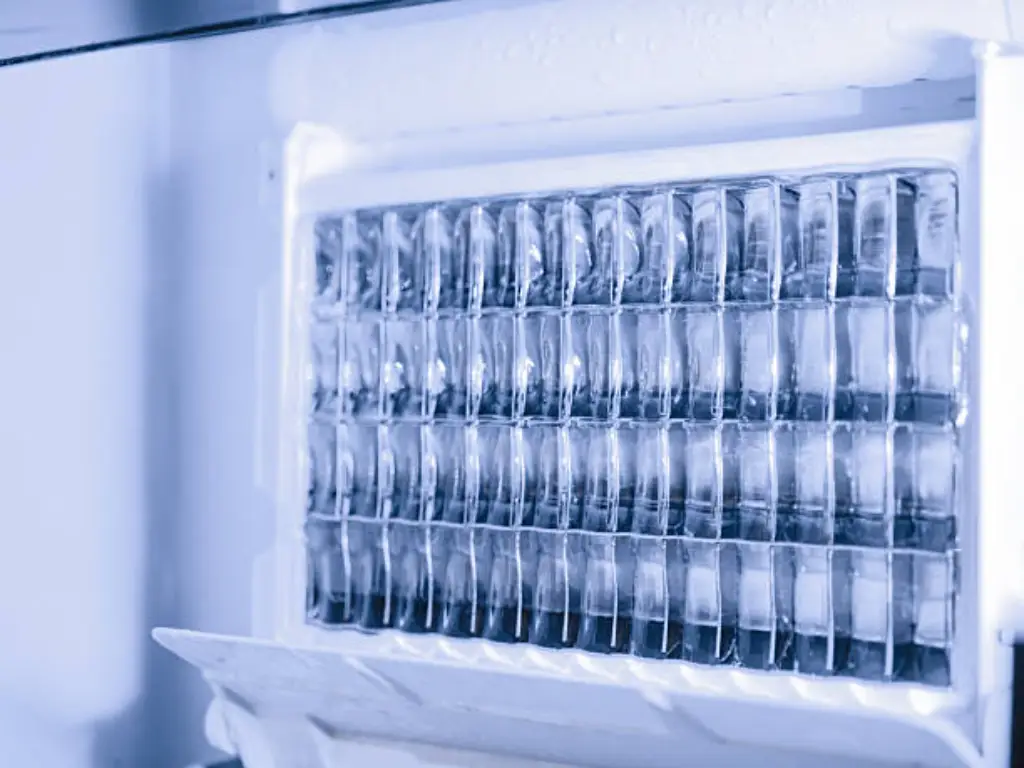
이 섹션에서는 상업용 제빙기가 어떻게 작동하는지 구조적으로 설명합니다., 물을 얼음으로 변화시키는 내부 순환에 초점. 이 프로세스의 각 단계는 폐쇄형 냉장 및 기계 시스템 내의 조화로운 구성 요소 세트에 의해 실행됩니다..
1. 물 섭취 및 여과
이 과정은 전용 급수관을 통해 기계에 물이 들어가는 것으로 시작됩니다.. 솔레노이드 제어 입구 밸브는 물의 타이밍과 양을 관리합니다.. 고성능 상업용 장치에는 일반적으로 침전물을 제거하기 위해 다단계 물 여과 시스템이 통합되어 있습니다., 염소, 얼음 투명도와 기계 수명에 영향을 미칠 수 있는 미생물 오염물질.
2. 물 분포
깨끗한 물은 저장소로 보내지거나 금속 증발기판으로 펌핑됩니다.. 수직 플레이트 시스템에서 (큐브 아이스 메이커에서 흔히 볼 수 있는), 물은 닫힌 고리로 순환한다, 균일한 동결을 보장하기 위해 냉각된 표면 위로 지속적으로 흐릅니다..
3. 냉동 사이클 개시
시스템의 중심에는 냉동 회로가 있습니다.. 이 회로에는 다음이 포함됩니다.:
- 압축기: 저압의 냉매 증기를 고압으로 압축, 고온 가스.
- 콘덴서: 냉매는 응축기의 코일을 통해 흐릅니다. (공기- 또는 수냉식), 열을 발산하고 고압 액체로 응축.
- 팽창 밸브 (TXV): 냉매가 증발기로 들어가기 전에 냉매 압력을 감소시킵니다..
- 증발기 플레이트: 저압 냉매가 플레이트 내에서 증발함에 따라, 순환하는 물에서 열을 흡수합니다., 서서히 얼려.
4. 얼음 형성
얼음이 여러 겹으로 형성되기 시작합니다. 대부분의 모듈식 큐브 제빙기에서, 증발기 그리드 위에 얇은 얼음 층이 점차 쌓입니다.. 흐르는 물은 가장 차가운 분자만 얼게 합니다., 맑고 투명한 얼음을 생산하다.
다양한 얼음 유형은 이 단계에서 변형을 사용합니다.:
- 플레이크 제빙기는 원통형 증발기 배럴에서 직접 얇은 층을 동결시킵니다..
- 너겟 아이스는 부드러운 얼음을 압축하여 형성됩니다., 반쯤 얼린 얼음 조각.
- 슬러리 또는 펌핑 가능한 얼음은 식염수를 사용하여 얼음 결정이 부유된 부분적으로 얼어붙은 액체를 생성합니다..
5. 수확주기
미리 설정된 두께 또는 온도 임계값이 충족되면 (일반적으로 프로브나 서미스터를 통해 모니터링됩니다.), 시스템이 수확 주기를 시작합니다.:
- 압축기가 정지되거나 잠시 후진합니다..
- 핫가스 바이패스 밸브가 열립니다., 뜨거운 냉매 가스를 증발기로 보내는 방법.
- 이는 빙상을 느슨하게 해준다., 중력이나 기계적인 도움으로 인해 보관함에 떨어지게 됩니다..
6. 얼음 저장 및 빈 제어
얼음은 단열 용기에 보관됩니다., 적외선 또는 기계식 센서가 얼음 수준을 모니터링하는 곳. 통이 가득 차면, 얼음이 사용되거나 제거될 때까지 생산이 일시 중지됩니다.. 일부 모델에는 브리징이나 응집을 방지하기 위해 자동 교반기가 통합되어 있습니다..
7. 위생 및 순환 반복
고급 모델은 자동 세척을 수행하여 스케일과 박테리아 축적을 줄입니다.. UV 조명 또는 오존 시스템도 통합될 수 있습니다..
이주기는 지속적으로 반복됩니다, 물만큼 안정적인 얼음 공급, 힘, 환경 조건이 최적으로 유지됩니다.. 상업용 제빙기가 작동하는 방식을 완전히 파악하고 최적화 또는 결함 진단을 위한 지점을 식별하려면 이러한 각 단계를 이해하는 것이 중요합니다..
냉각 방법 비교: 공냉식 vs 수냉식 vs 원격 냉각 장치
냉각 메커니즘은 에너지 효율성에 직접적인 영향을 미칩니다., 물 소비, 설치 유연성, 및 유지보수 주기. 각 방법에는 상황에 따른 이점이 있습니다.:
| 특징 | 공랭식 | 수냉식 | 원격 냉각 |
| 열 방출 | 주변 공기 속으로 | 배수 라인으로 | 기계에서 멀리 (지붕 등) |
| 물 사용량 | 낮은 | 높은 | 낮은 |
| 에너지 효율 | 보통의 | 높은 (더운 기후에서) | 높은 |
| 이상적인 조건 | 환기가 잘 되는 실내 공간 | 물이 풍부한 환경 | 소음/열에 민감한 구역 |
| 유지 | 공기 흐름 여유가 필요함 | 스케일링 위험, 정수 필터 | 복잡한 설치 |
물 가격이 비싸거나 제한된 지역, 공냉식 장치가 선호됩니다.. 수냉식 모델은 높은 주변 온도에서 더 나은 성능을 발휘합니다.. 원격 냉각 시스템은 소음 및 내부 열 부하 감소를 추구하는 대규모 설치에 적합합니다..
상업용 제빙기의 종류와 얼음 모양
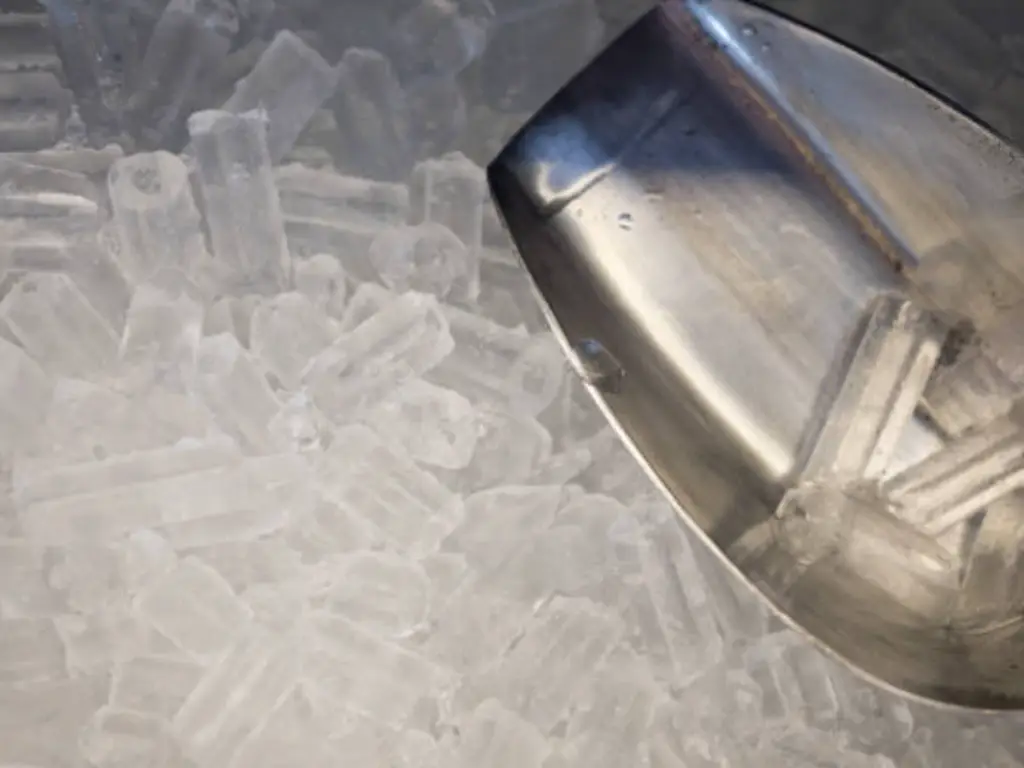
올바른 상업용 제빙기를 선택하려면 기계 유형이나 얼음 모양을 선택하는 것 이상이 필요합니다.. 장기적인 성능과 제품 적합성을 보장하기 위해, 기업은 냉각 방법도 평가해야 합니다., 냉매, 에너지 효율, 생산된 얼음의 실제 품질.
기계 구성 및 얼음 모양 이해
상업용 제빙기는 세 가지 주요 구성으로 제공됩니다.:
- 모듈러 유닛: 별도의 얼음통을 갖춘 고출력 시스템. 이상을 요구하는 작업에 적합 500 하루에 얼음 lbs.
- 언더카운터 단위: 내장형 스토리지를 갖춘 컴팩트 시스템, 바에 이상적, 카페, 또는 프론트 오브 하우스 서비스 구역.
- 조리대 얼음 디스펜서: 위생과 사용자 친화적인 디자인이 우선시되는 병원이나 사무실 환경에서 자주 사용됩니다..
얼음 종류도 사용 사례에 따라 다릅니다.:
- 전체 및 절반 큐브: 딱딱한, 천천히 녹는; 음료 서비스에서 선호.
- 너겟 아이스: 부드러운, 씹을 수 있는; 의료 및 셀프 서비스 음료 스테이션에서 선호됨.
- 플레이크 아이스: 얇은, 휘기 쉬운; 해산물에 최적, 육류 가공, 그리고 냉찜질.
- 슬러리 얼음: 열 전달이 뛰어난 반액체 얼음 용액; 물류에 사용, 낙농, 및 수상 운송.
- 얼음 블록: 조밀하고 천천히 녹는다; 산업용 콜드체인이나 전력이 불안정한 지역에 필수.
주요 기술적 고려사항 및 얼음 품질 평가 방법
- 냉각 시스템: 공냉식을 선택하세요, 수냉식, 또는 현장 레이아웃에 따라 원격 냉각 가능, 통풍, 그리고 물 공급.
- 냉매: 환경 표준에 맞춰 R-134a 또는 R-404A와 같은 레거시 가스 대신 R-290 또는 CO2와 같은 낮은 GWP 옵션을 선택하십시오..
- 성능 지표: 일일 생산량을 고려하십시오. (100-2,000파운드 이상), 얼음 회복 속도, 천 당신, 에너지 소비.
- 인증: 찾아보세요 에너지 스타® 효율성을 위해, 위생 준수를 위한 NSF, ISO 9001 제조 품질을 위해. 이러한 표준은 규제 조정과 운영 신뢰성을 모두 반영합니다..
얼음 품질 지표
- 명쾌함: 얼음이 깨끗할수록 여과 성능이 향상되고 동결 시간이 길어집니다..
- 경도: 밀도가 높은 큐브는 더 느리게 녹고 음료에 더 잘 고정됩니다..
- 모양 균일성: 일관된 물 분배 및 동결 제어를 나타냅니다..
- 맛과 냄새: 깨끗한 맛의 얼음은 적절한 여과와 유지 관리를 반영합니다..
기능성과 인증된 성능을 모두 바탕으로 제빙기를 선택하면 신뢰성이 보장됩니다., 위생, 운영 전반에 걸친 비용 관리.
상업용 제빙기의 문제를 해결하고 유지 관리하는 방법
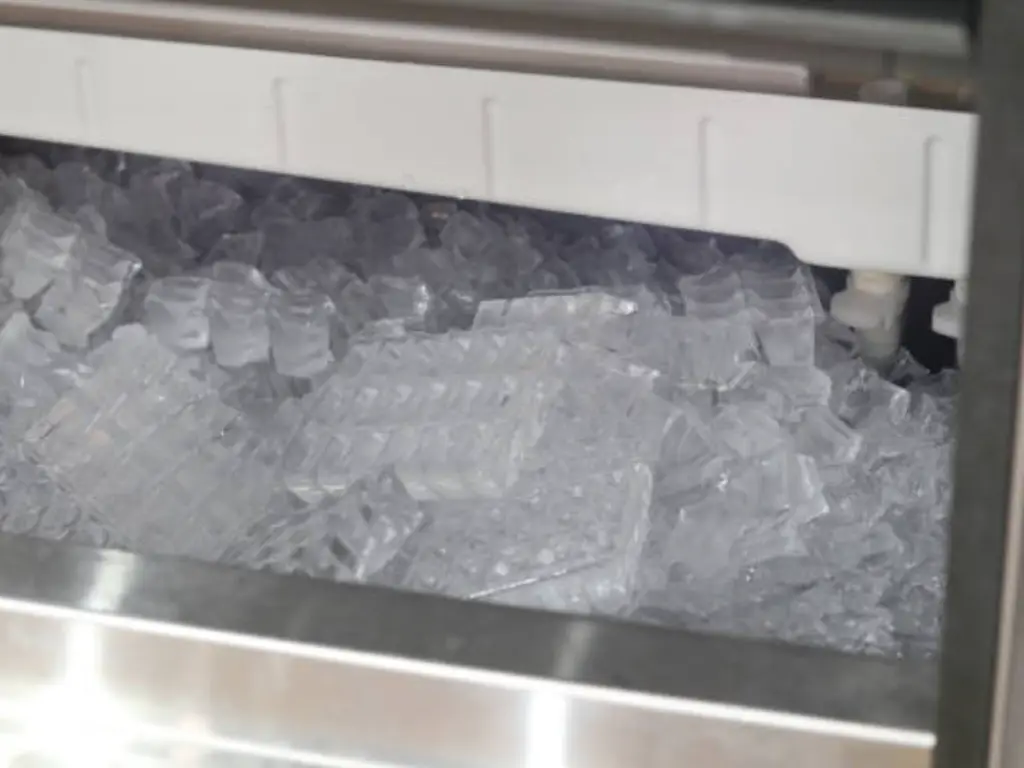
적절한 유지 관리와 적시 진단은 얼음 품질을 향상할 뿐만 아니라 기계의 작동 수명과 효율성을 연장합니다..
일반적인 문제 및 문제 해결 팁
- 낮은 얼음 생산량
가능한 원인: 더러운 콘덴서, 낮은 물 흐름, 스케일 축적, 주변 과열.
해결: 깨끗한 콘덴서 코일, 흡입 밸브 검사, 증발기에서 스케일링을 플러시.
- 얼음이 흐리거나 부드럽습니다.
물 여과가 불량하거나 불완전한 동결로 인해 발생 가능성이 높음.
해결책: 필터 교체, 주기가 짧거나 냉매 문제가 있는지 확인하세요..
- 과도한 소음
팬 또는 압축기 고장, 느슨한 부품, 아니면 얼음 다리.
검사 및 부품 조임 또는 교체가 필요할 수 있습니다..
- 누출 또는 오버플로
배수 펌프 결함 또는 플로트 밸브 오작동으로 인해 발생.
배수 라인 청소; 테스트 수위 조절.
유지 관리 및 청소 모범 사례
- 일일: 빈 빈, 국자를 소독하다, 비정상적인 소음을 검사하다.
- 주간: 깨끗한 쓰레기통 내부, 센서 닦기, 배수 라인을 확인하세요.
- 월간 간행물: 스케일 제거 증발기, 인라인 필터 교체, 냉매 성능 확인.
- 반년마다: 제조업체별 세척제 및 소독제를 사용하여 심층 청소를 수행합니다.; 단열재를 검사하다, 물 전도도, 및 시스템 압력.
이러한 관행에 대한 확고한 이해는 이를 보완합니다. 유지 관리 가이드 상업용 제빙기가 어떻게 효율적으로 작동하는지에 대한 이해를 심화시킵니다..
장기적인 가치를 위한 올바른 상업용 제빙기 선택
아래 표에는 이 가이드에서 논의된 주요 고려 사항이 요약되어 있습니다.:
| 애플리케이션 | 얼음 종류 | 냉각방식 | 권장 머신 유형 | 일일 출력 범위 |
| 해산물 & 수산업 | 플레이크 / 슬러리 | 물 또는 원격 | 산업용 플레이크 제빙기 | 1,000-10,000kg |
| 식당 & 바 | 입방체 (전체/반) | 공랭식 | 모듈식 또는 언더카운터 | 150-500kg |
| 슈퍼마켓 | 플레이크 | 항공 또는 원격 | 플레이크 아이스 디스플레이 시스템 | 500-2,000kg |
| 병원 & 헬스케어 | 덩어리 / 플레이크 | 공랭식 | 조리대 디스펜서 | 100-300kg |
| 음료 공장 | 차단하다 / 입방체 | 원격 냉각 | 헤비듀티 모듈러 머신 | 2,000–5,000kg |
이러한 요소를 넘어서, 브랜드 역량이 중요한 역할을 함. 신뢰할 수 있는 제조업체는 기계 그 이상을 제공합니다., 비즈니스별 요구 사항에 맞춰 서비스 가능한 시스템.
콜러, 예를 들어, ISO에 따라 제작된 맞춤형 제빙기를 제공합니다. 9001 그리고 OHSAS 18001 표준. 해당 시스템은 긴 서비스 수명으로 알려져 있습니다., 일관된 출력, 그리고 24/7 기술 지원, 성능과 가동 시간을 요구하는 산업에 이상적입니다..
신뢰성을 보장하는 전문가의 조언과 맞춤형 솔루션을 원하시면 지금 저희에게 연락하십시오., 매일 효율적인 얼음 생산.

